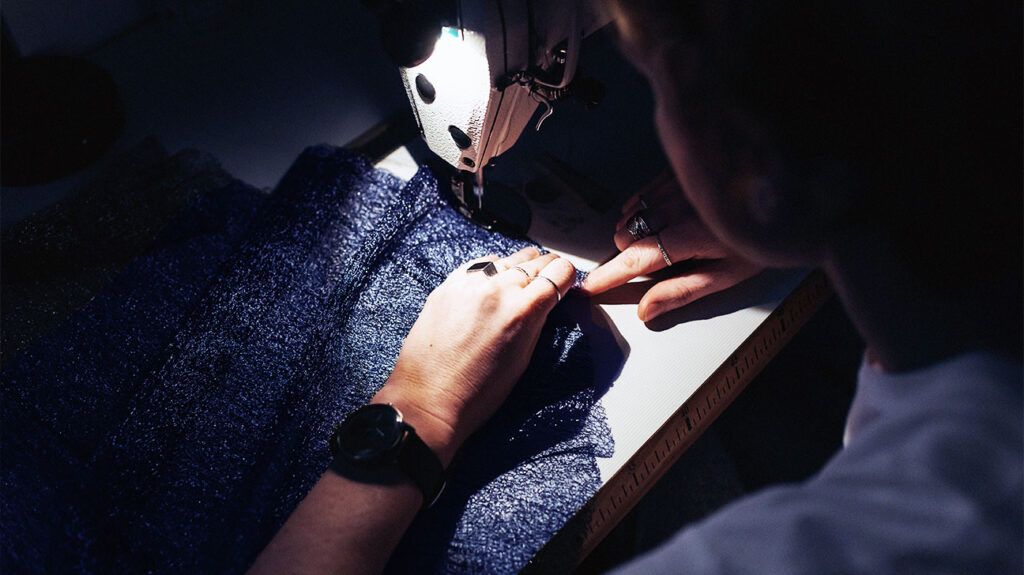Macular degeneration and macular dystrophy are eye conditions affecting the center of the retina. Although they share overlapping symptoms, their root causes and treatments differ.
Macular degeneration primarily affects older adults, with age-related macular degeneration (AMD) being the most common form.
In contrast, macular dystrophies are a group of genetic disorders that can be present from birth or develop during childhood or adolescence. Both conditions eventually lead to central vision loss.
This article explores the symptoms, causes, diagnosis, and treatments of macular degeneration versus macular dystrophy.

Macular degeneration and macular dystrophies both affect the macula, which is the part of the retina responsible for sharp, focused vision.
Macular degeneration is when the macula gradually breaks down. This usually affects older adults in the form of AMD.
There are
In contrast, macular dystrophies are a group of genetic disorders that can present earlier in life, sometimes from birth or childhood. They cause a progressive loss of vision as the macula atrophies, or wastes away.
Several types of macular dystrophy exist, including:
- Best disease
- Stargardt disease
- pattern dystrophy
- autosomal dominant drusen
- Sorsby fundus dystrophy
- X-linked retinoschisis
Both macular degeneration and dystrophy can cause similar symptoms because they affect the same part of the eye. However, neither causes symptoms initially.
When AMD causes symptoms, they
- blurry central vision
- distorted vision, which may make straight lines look wavy
- difficulty focusing on up-close tasks, such as reading
- sensitivity to light
- duller color vision
- difficulty seeing in low light, or night blindness
- dark or empty spots in the center of vision (scotomas)
- loss of central vision
Macular dystrophy causes similar symptoms. However, depending on the type someone has, they may not experience significant symptoms for decades, or their progression may be rapid.
Some people with macular dystrophy can also have:
- strabismus, or misaligned eyes
- nystagmus, or involuntary eye movements
- a loss of peripheral vision and central vision
Health experts do not fully understand the exact cause of macular degeneration. However, there are some known risk factors,
- older age
- smoking
- high blood pressure
Macular dystrophies are genetic conditions. They occur due to changes in specific genes that affect the function of the retina. These genes pass from parents to their children.
Healthcare professionals
- Retinal imaging: This includes optical coherence tomography, which provides detailed images of the retina to detect thinning, swelling, or damage to the macula.
- Fluorescein angiography: This test
detectsTrusted Source atypical blood vessel growth in the retina with a special camera. - Full-field electroretinography: This test measures the electrical responses of the retina when stimulated by light. It assesses the function of the entire retina, including the photoreceptors and the inner retinal cells.
- Genetic testing: For macular dystrophy, genetic testing can confirm the specific genetic changes responsible for the condition.
- Visual acuity tests: These tests help assess how much central vision has changed.
Learn more about how doctors diagnose macular degeneration.
The treatment options for macular degeneration and macular dystrophy differ.
Macular degeneration
Treatment for macular degeneration
There is no cure for dry AMD, but for those with intermediate or advanced AMD, a combination of vitamins and minerals may slow its progression.
The formula is known as AREDS and contains:
- vitamin C
- vitamin E
- beta carotene
- zinc oxide
- cupric oxide
Maintaining a nutritious diet and avoiding smoking are also helpful in managing the condition.
For wet AMD, anti-vascular endothelial growth factor (VEGF) injections such as ranibizumab (Lucentis) or aflibercept (Eylea) can block blood vessel growth and prevent further vision loss. Laser therapy may also be an option.
For either type of AMD, vision aids can help people manage the condition and improve their vision.
Macular dystrophy
There is no specific treatment to
A doctor may recommend:
- wearing glasses
- using other vision aids, such as magnifying glasses
- wearing sunglasses to protect the eyes from bright light
- trying mobility training, which helps people with vision impairments learn to get around
Scientists are researching gene-based therapies that may be able to address the genes that cause these conditions.
Neither macular degeneration nor macular dystrophy are curable. However, treatments are available to manage symptoms. For AMD, there may also be ways to slow the progression.
Current research in genetic and regenerative medicine offers hope for future treatments that could address the underlying causes of macular dystrophy.
Both macular degeneration and macular dystrophy affect the macula, which is the central part of the retina. Both conditions progress over time, and both cause vision loss.
However, these conditions have different causes. Macular degeneration has associations with aging and environmental factors, such as smoking. Wet and dry age-related macular degeneration (AMD) also both have some treatments that can slow the progression.
In contrast, macular dystrophy is an inherited genetic disorder. There are no current treatments to halt its development. However, people with either condition can use vision aids, mobility training, and other adaptations to manage the condition.

